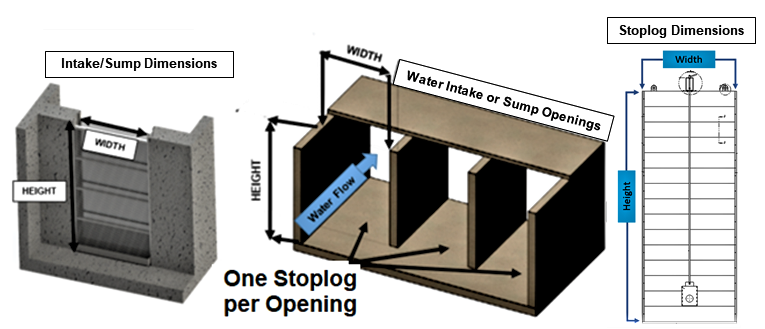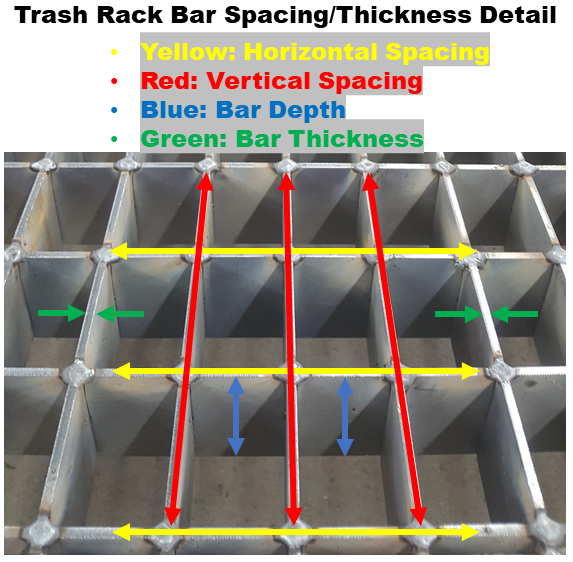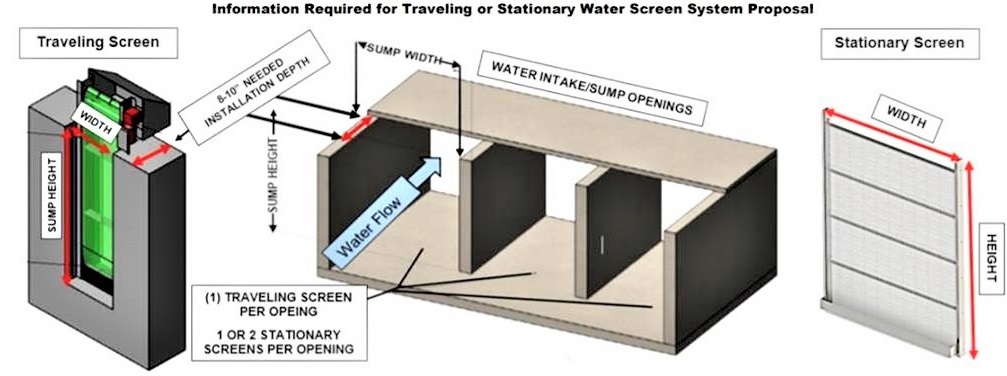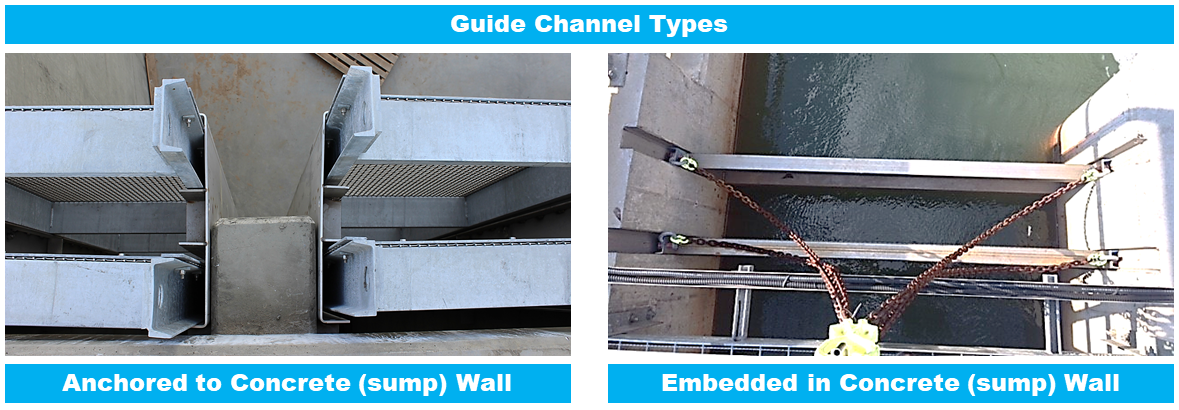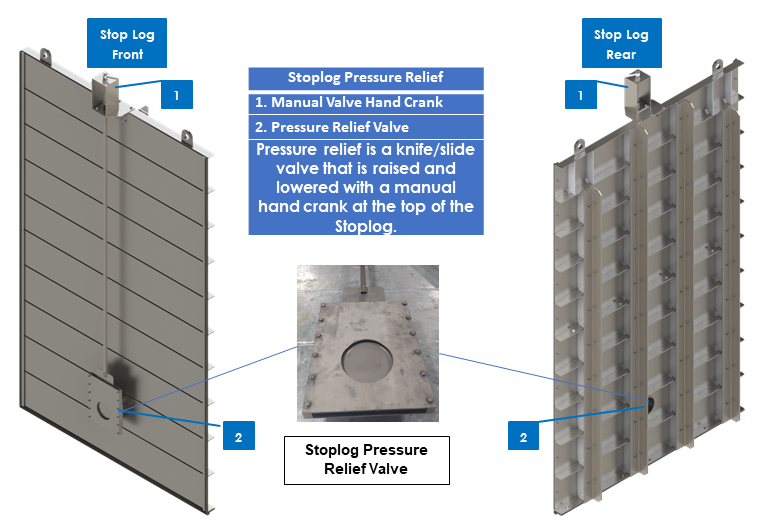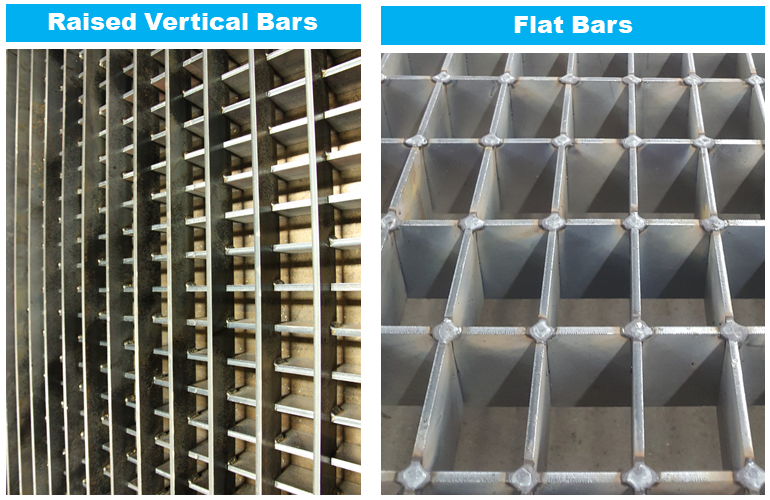The following article compares a Traveling Water Screen (TWS) system to the Stationary Water Screens that are traditionally installed in a cooling tower basin. After reading this article you will see that in most cases, a Traveling Water Screen has a significantly lower total cost of ownership when compared to its stationary counterpart.

Advantages of a Traveling Water Screen:
- Self-Cleaning: Reduces maintenance costs
- Increased Safety: No more lifting & moving water screens to clean
- Highly Efficient: Removes harmful debris from the water
- Easy Drop in and Replacement: No modification of the basin required
Value Statement: A Traveling Water Screen (TWS) system safely and efficiently removes the harmful debris that over time can cost a facility hundreds of thousands of dollars in lost production and maintenance costs.
The Problem is Debris: The volume and type of debris in a cooling tower basin is directly impacted by the age and condition of the cooling tower and its location. In aging cooling towers, larger fragments of wood and plastic will fall into the basin from the tower itself. Pieces of trash and natural debris from the surrounding environment are also pulled into the basin by the force of the cooling tower fans.
The chart below displays how the risk posed by debris in cooling towers varies based on the age of the cooling tower and the cleanliness of environment in which it operates.
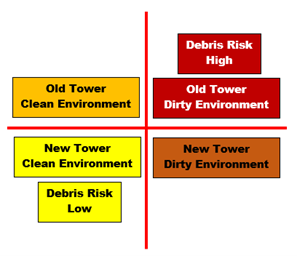
The Stationary Water Screens Have a Flawed Cleaning Process: Water screens are installed in cooling tower basins to capture pieces of debris large enough to obstruct the flow of cooling water through the tubes in the heat exchangers (see picture). Stationary screens of varying types are used in most cooling tower basins. Each time debris builds up on the screens, a crew of people and equipment are required to lift the screens out of the water to be cleaned. This process is resource intensive and is not without risk of personal injury.
Heat exchanger tubes obstructed with cooling tower debris

The main problem with a “stationary” system is the cleaning process itself. As the screens are lifted out of the water, larger pieces of debris will pass under the screens. This occurs due to gravity (debris falls off the screens) and the undertow effect, that occurs as a result of the screens being lifted. This force pulls debris that is gathered at the bottom of the sump back, through the pump, and to the heat exchangers.
Debris moving under stationary water screens during cleaning
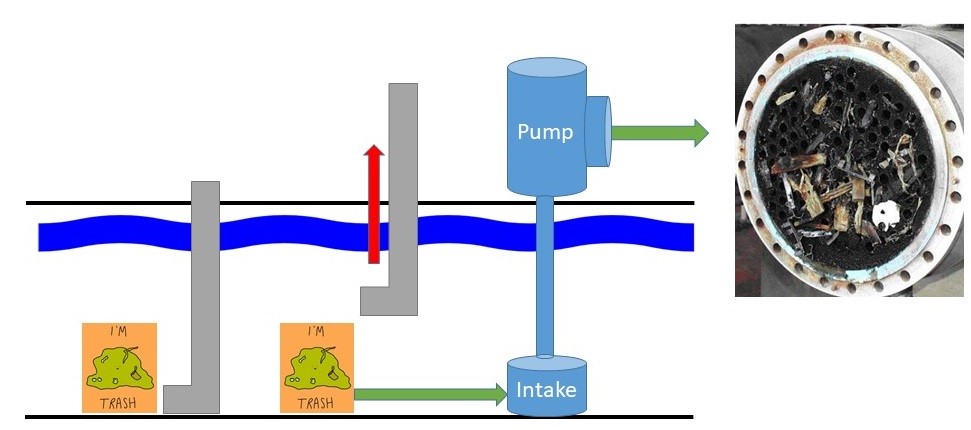
The Cost of Debris:
As the volume of harmful debris continues to increase, the frequency and cost of pulling and cleaning the stationary screens will also increase. Additionally, as debris builds up and obstructs the flow rate of cooling water through the heat exchangers, there will be a decrease in the efficiency of the cooling system. This can result in lower production, higher power usage to compensate for the clogged exchangers, and eventually to a costly outage to clean the debris from the exchangers.
Traditional cooling tower Stationary Water Screen pulled out of the basin for cleaning.
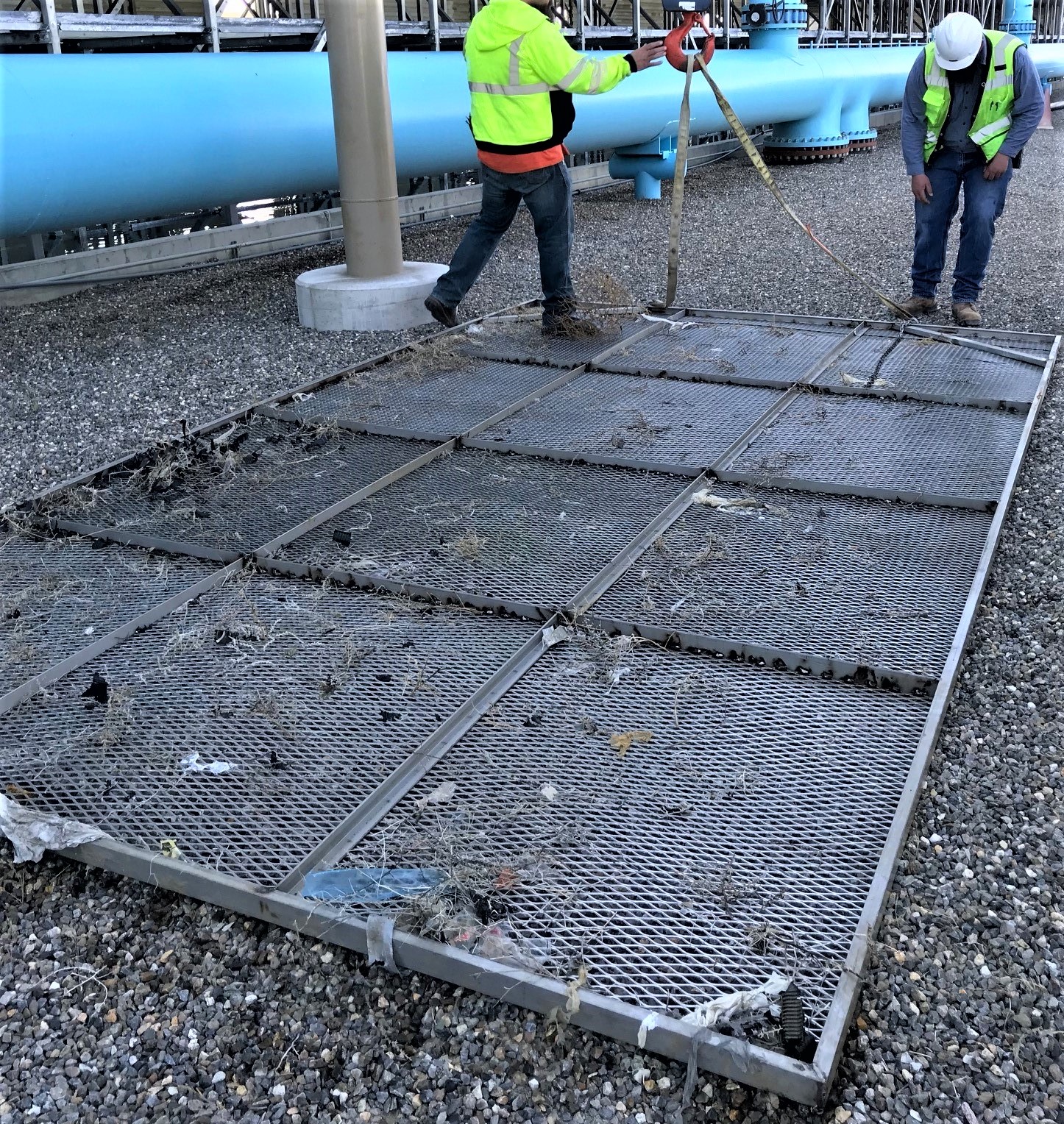
The Solution is a Traveling Water Screen (TWS) System: A Traveling Water Screen system is a drop in and replace system for stationary screens. It has a rotating mesh belt that lifts harmful debris from the water and removes it with a self-cleaning system that sprays the debris into a collection trough.
When compared to traditional stationary screens, a TWS is much safer, maintains the efficiency of the cooling system and requires significantly fewer resources to maintain.
Traveling Water Screen System.
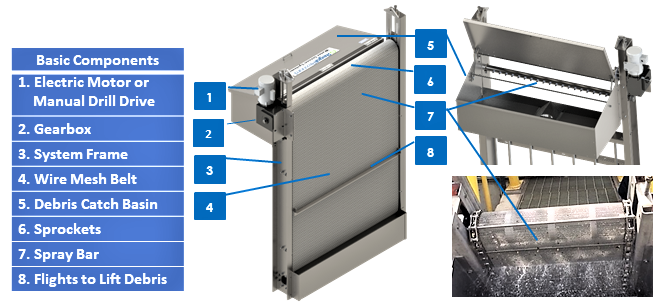
Traveling Water Screen Return on Investment (ROI) Example – A geothermal power plant purchased a Cambridge Water Screen System to replace their stationary water screens in their cooling tower basin.
This facility had a large volume of environmental debris (trash, brush, etc.) that was being pulled into the basin. They determined this debris was passing by their traditional water screens during cleaning and was obstructing their heat exchangers. They calculated that this obstruction caused a 7% decline in production in less than one year, and the cost of an annual outage (vs every two years as planned) to clean debris from the heat exchangers was $310K. Over a five-year time period, the savings and increased production is estimated at over $1 million.
Traveling Water Screen system (10’ wide x 20’ tall) replacing traditional water screens at a geothermal power plant.
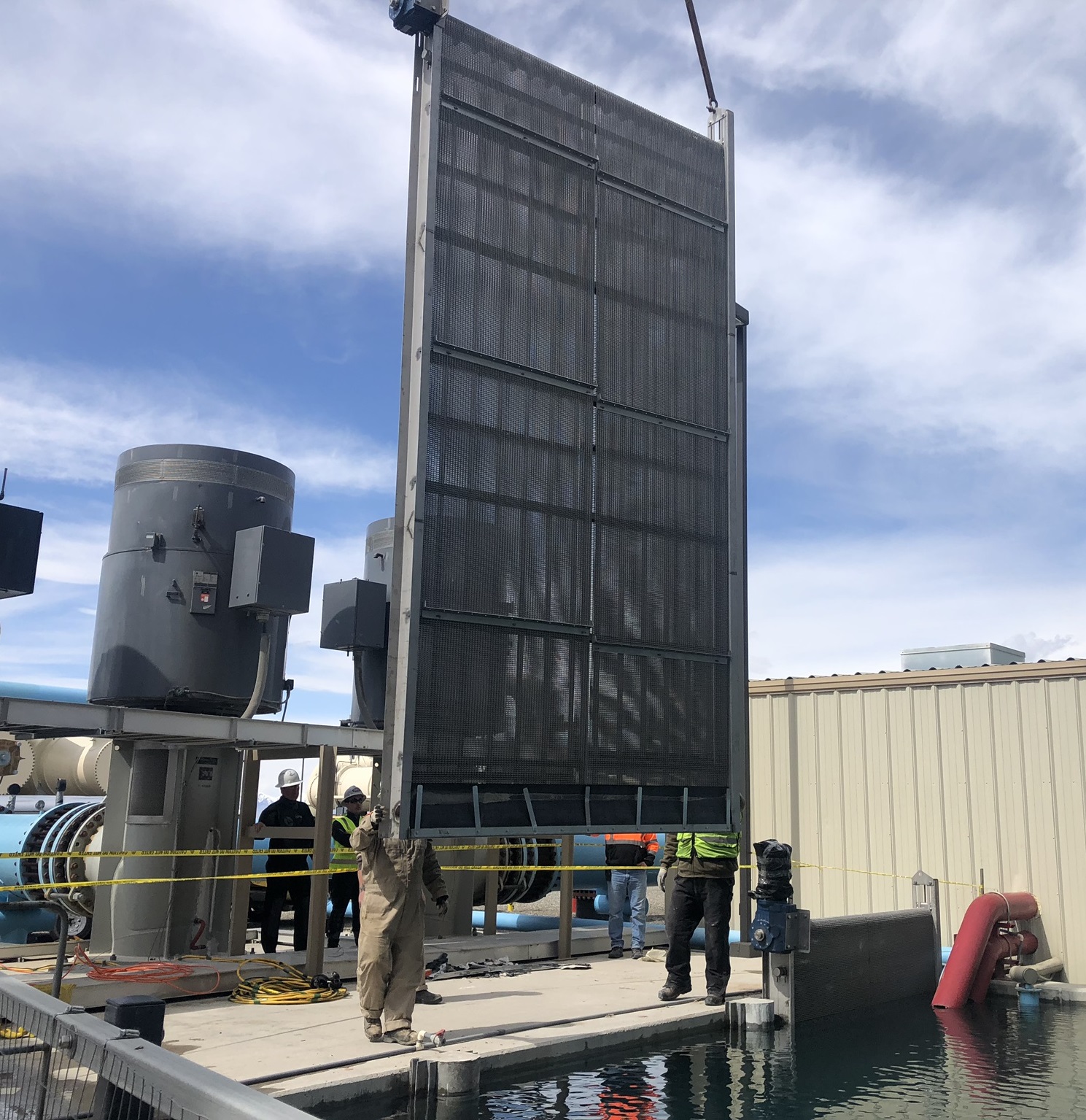
Ready to get started?
Get in touch with Us!

